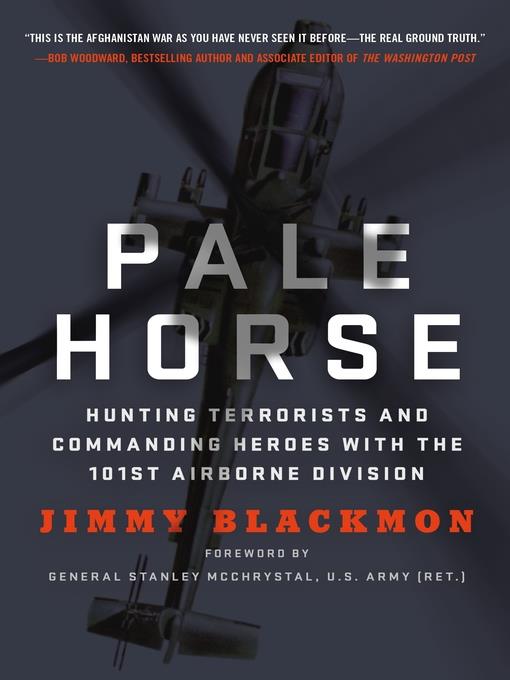
Pale Horse
Hunting Terrorists and Commanding Heroes with the 101st Airborne Division
کتاب های مرتبط
- اطلاعات
- نقد و بررسی
- دیدگاه کاربران
نقد و بررسی

April 25, 2016
Blackmon, a commander of Task Force Pale Horse during his U.S. Army aviation unit's deployment to Afghanistan in 2009, introduces readers to the aviation units' soldiers, battles, successes, and challenges, but provides little analysis or insight. He provides a good description of all their tactical missionsâreconnaissance, attack, and logistics supportâin the difficult terrain and weather conditions of the mountains of eastern Afghanistan. The book makes very clear, and is a tribute to, the tactical expertise and bravery of all of the aviation personnel, particularly the pilots who served in the task force. The period Blackmon covers is noteworthy for including some of the more well-known events of the recent war in Afghanistan, including the battle of Wanat, the search for Sgt. Bowe Bergdahl, and the battle of Ganjgal. Though these major events are associated with a great deal of public controversy, Blackmon fails to address that. Similarly, there is little analysis of policy, operations, or strategy. Blackmon shares an enjoyable story about his unit and the aviation support systems, but it's an uncritical work that neglects to place the battles in any larger context or note whether they had any appreciable effect on the war.

December 1, 2015
Blackmon narrates the blow-by-blow experience of flying helicopters through embattled mountains during the Afghan War. The 101st Airborne Division is legendary for its actions in the D-Day invasion and Battle of the Bulge. As a squadron commander in the 2000s, the author helped lead the division's modern incarnation. Small teams of infantrymen patrol the Afghan countryside in weaponized choppers, and the narrative is an endless series of ambushes and firefights. His subject matter is in turns suspenseful and violent, but Blackmon's writing remains calmly technical: "Smoke began to fill the cockpit as the fire continued to burn in the back of the helicopter. Sergeant McLowhorn disconnected his safety strap and retrieved an extinguisher." While the book is intended for military buffs, and Blackmon uses authentic jargon, he never loses average readers. More importantly, he adds personal touches that humanize the story. Blackmon grew up in Georgia and labels himself as a born fighter, and he idolizes his fellow servicemen, who come off as selfless, courageous, and professional. The author honestly reflects on PTSD and the damage it has wreaked on his colleagues. In one scene, a flight surgeon recounts his nightmares, which involve blown-off limbs and abandoning soldiers in the battlefield to die. Blackmon doesn't delve much into civilian politics, and his outlook is rigidly martial, but he seems to empathize with the people and problems of the Middle East. "For me, there was no questioning the necessity of our mission in Afghanistan," he writes. "What troubled me was how we could convince isolated tribesmen like those in the Helgal to embrace our vision of their future. It must have seemed like such a foreign concept to them, like my grandmother trying to convince me that castor oil was good for me as a child." A vivid, action-packed combat memoir, Blackmon's book explores what life is like for those boots on the ground, as well as in the air.
COPYRIGHT(2015) Kirkus Reviews, ALL RIGHTS RESERVED.

December 1, 2015
Since the onset of the War in Afghanistan in 2001, the conflict has occupied the attention of Americans and generated several personal accounts by military personnel. Despite these records, the air war that took place high above the rugged and often formidable terrain has seldom been told. Blackmon, who commanded an aviation task force called Pale Horse between 2008 and 2009, provides a powerful and hard-hitting narrative of the daily lives of those men and women who fought against the forces that thrived in the remote northeastern corner of Afghanistan. Based on his diary, Blackmon's work relates the day-to-day activities of his small squad flying Chinook helicopters in support of American ground forces struggling to contain attacks from well-entrenched Taliban and Al-Qaeda fighters. Describing what is akin to a modern-day cavalry riding a steel beast, Blackmon's story helps fill a gap in our understanding of America's involvement in this lengthy battle. VERDICT An excellent addition to the growing literature on America's 21st-century wars.--Ed Goedeken, Iowa State Univ. Lib., Ames
Copyright 2015 Library Journal, LLC Used with permission.

























دیدگاه کاربران